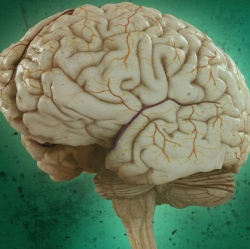
Researchers from CMU’s Machine Learning Department performed functional magnetic resonance imaging (fMRI) scans of eight people as they read a chapter of a Harry Potter book. They then analyzed the scans, cubic millimeter by cubic millimeter, for every four-word segment of that chapter.
The result was the first integrated computational model of reading, identifying which parts of the brain are responsible for such subprocesses as parsing sentences, determining the meaning of words and understanding relationships between characters.
As Leila Wehbe, a Ph.D. student in the Machine Learning Department, and Tom Mitchell, the department head, recently reported in the online journal PLOS ONE, the model was able to predict fMRI activity for novel text passages with sufficient accuracy to tell which of two different passages a person was reading with 74 percent accuracy.
"At first, we were skeptical of whether this would work at all," Mitchell said, noting that analyzing multiple subprocesses of the brain at the same time is unprecedented in cognitive neuroscience. "But it turned out amazingly well and now we have these wonderful brain maps that describe where in the brain you’re thinking about a wide variety of things."
Wehbe and Mitchell said the model is still inexact, but might someday be useful in studying and diagnosing reading disorders, such as dyslexia, or to track the recovery of patients whose speech was impacted by a stroke. It also might be used by educators to identify what might be giving a student trouble when learning a foreign language.
